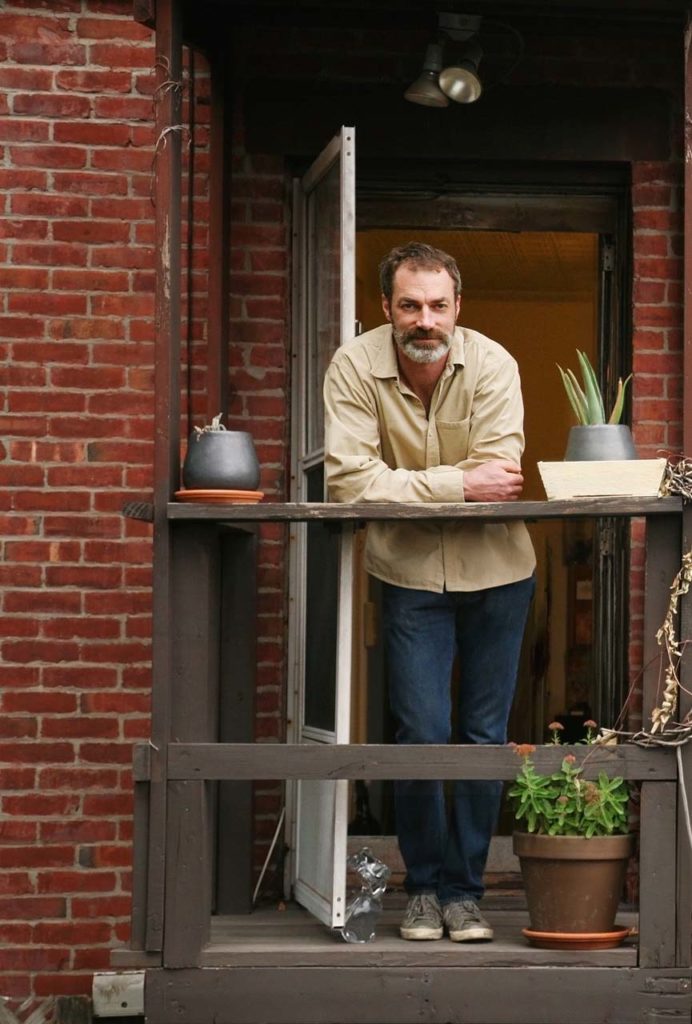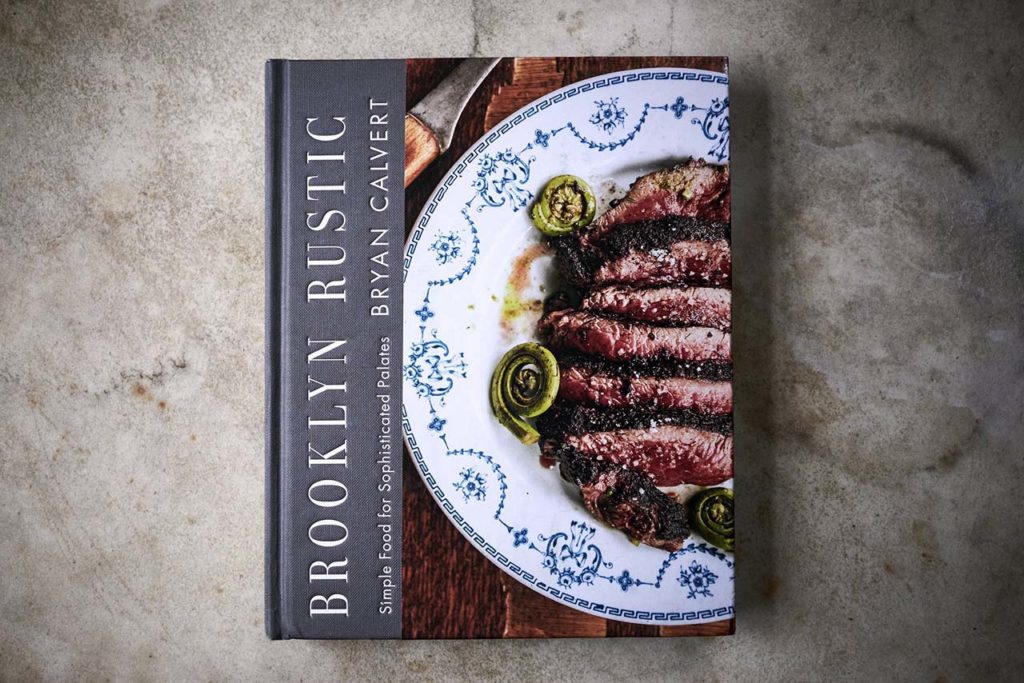How to store your herbs with a chef’s finesse, and a scall op dish made spring-perfect with fresh basil
by Bryan Calvert
We Brooklynites are blessed by the occasional small backyard plot, fire escape, or rooftop. While not necessarily ideal for growing tomatoes or squash, they can be tailor made for herbs, and a significant quantity can be grown in small spaces. Plants, including herbs, grow at their own pace, but a little bit of patience and nurturing can yield flavor that will make the wait worth it, and transform ordinary dishes.
I pick small sprigs off plants as they grow throughout spring and summer. When there’s an abundance, I preserve them for seasons ahead using two approaches: dry and wet.

For hearty herbs like rosemary, sage, and thyme, drying works well, as their strong flavors hold up over the winter. Trim the branches and hang them for a few days, leaves down (branches not touching) in a dark, cool, dry place with good ventilation. Make sure they are completely dry to avoid molding. Remove the leaves and store them in airtight jars. (Toss dried stems on the barbecue for a little extra smoky flavor.)
For delicate herbs like basil, mint, parsley, and cilantro, there’s the wet method. I make oil-based sauces like chimichurri, pistou, and pesto and freeze them in small batches; the oil captures their taste and aroma and will keep for a few months in the freezer. Infusing vinegars with herbs is another quick way to capture flavors. Fully submerge a few fresh herb sprigs in a sealed bottle of vinegar, and it will take on the flavors of the herbs in a few days. (They must be fully submerged to prevent them from molding.) Use delicate herbs (basil, cilantro, French tarragon, lemon thyme) with lighter vinegars like white wine or rice vinegar, and robust herbs (rosemary, sage, thyme) with stronger vinegars like sherry, red wine, or balsamic. You can also use leftover wine in place of vinegar to make a cooking wine that’s great for pan sauces.

Seared Scallops with Roasted Cauliflower and Olive Puree
Seared scallops are so sweet and tender that they don’t need much else to make a beautiful dish. Roasted cauliflower and fresh basil complement their richness, and a simple olive puree adds a nice brininess. If blood oranges or grapefruit are in season, a cup of segments tossed with the pea shoots brings a bright, juicy pop to the dish.
Serves 4
2 heads cauliflower, cut into 1-inch florets (about 8 cups)
2 tablespoons extra-virgin olive oil, plus more for serving
Fine sea salt
1/2 cup pitted black olives, preferably Kalamata or Alfonso
1/2 cup vegetable stock or water
Finely grated zest and juice of 1 lemon
1/4 cup fresh basil leaves, sliced
2 tablespoons avocado or coconut oil
1 1/2 pounds jumbo scallops (12 to 16 scallops)
Freshly ground black pepper
4 ounces young pea shoots
Preheat the oven to 375°F. Place a large roasting pan in the hot oven for five minutes. Toss the cauliflower with the olive oil and 1⁄4 teaspoon salt in a bowl. Pour cauliflower into the preheated pan in an even layer and roast until golden brown, (about 15 minutes), stirring once halfway through roasting.
In a blender, puree olives, vegetable stock, lemon juice, and half the basil until smooth (about two minutes).
Heat cooking oil in a large skillet over medium-high heat. Pat scallops dry and season with salt and pepper on both sides. Cooking in batches if necessary, add scallops to the skillet, leaving at least 1 1/2 inches between each scallop. Sear until golden brown (three to four minutes per side).
Scatter the pea shoots on a serving platter. Sprinkle the roasted cauliflower over the pea shoots, then lay scallops on top. Drizzle olive puree over everything and garnish with a sprinkle of lemon zest, the remaining basil, and a drizzle of olive oil.
Wine Pairing
The old standby when it comes to scallops is to pair with a crisp, high-acidity chardonnay or other similar white, but I became fond of this table wine, from master vintner E. Guigal, when I was working at Classics Wines in Boston while a student a Boston University School of Hospitality. It’s a medium body red with a nice balance of berry fruit and earthy tones. It holds up well to the richness of the scallops, the earthiness of the cauliflower, and deep briny flavor of the olives. It’s also light enough to not overpower the delicacy of the scallops.

Bryan Calvert
Chef and co-founder of James restaurant
605 Carlton Avenue / 718.942.4255 / jamesrestaurantny.com
Intro and recipe adapted from Brooklyn Rustic, Copyright © 2016 by Bryan Calvert. Used with permission of Little, Brown and Company
